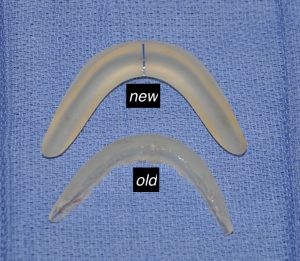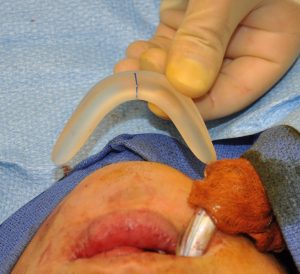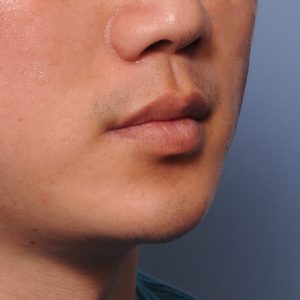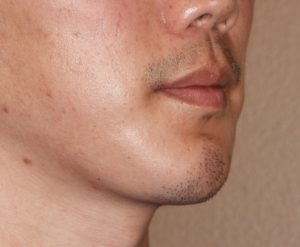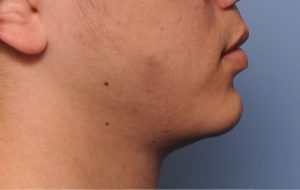Background: Chin implant surgery is the historically and still today the most commonly performed facial augmentation procedure. All contemporary chin implants, regardless of their style, are intended to provide a horizontal augmentative effect. In essence the implant is designed to be placed on the front edge of the chin bone just down to the inferior border.
Chin implants are designed to create their main effect in side profile with a forward push on the soft tissue chin pad. But they all have the potential to create a slight vertical lengthening effect as the soft tissue chin pad rolls forward even when the implant is positioned on the front face of the bone. Such vertical lengthening effects are extremely modest and would not really be called a significant vertical lengthening increase. To create more of a vertical lengthening effect, surgeons will try to position the chin implant lower on the bone, not the way the implant was designed to be used. While that may work in a small number of patients, it is dimnessonally unstable and its vertical effects are still limited.

Case Study: This young male had a prior chin implant placed of which all was known was that it was silicone in composition. While it provided adequate horizontal augmentation he wanted a more significant vertical effect as he felt his chin was not tall enough given his round face.
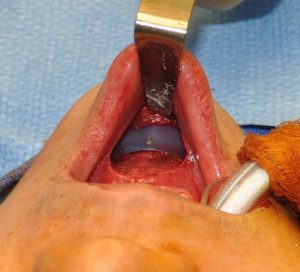
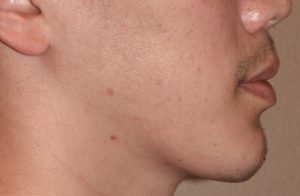
The traditional approach to vertical chin lengthening is an opening wedge bony genioplasty done intraorally. While still a very good and effective technique some patients may prefer an implant over cutting the bone…and not all plastic surgeons are comfortable with bony genioplasty surgery. The VLC implant provides a design that is unlike all other chin implants in that it creates an equal amount of vertical and horizontal chin augmentation.
Case Highlights:
1) Chin implant augmentation is most commonly done with the horizontal dimension in profile.
2) Select chin augmentation patients may require an equally vertical as well as horizontal dimensional enhancement.
3) The vertical lengthening chin implant can be placed both intraorally as well as externally with a single screw fixation.
Dr. Barry Eppley
Indianapolis, Indiana





